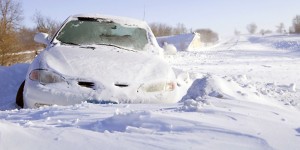What Should Be Your Next Steps If Your Car Gets Stuck In The Snow
While snow can be stunning and beautiful from indoors, it’s not so stunning when you have to drive in winter like conditions. Icy road conditions can sometimes take control from even the best drivers. Winter weather tests your driving skills, and it’s one of those tests in which failure can be expensive and dangerous.
The next time you are in an icy jam, try to follow the steps below if Your Car Gets Stuck .

Stay calm:
The first step that you need to follow when your car becomes stuck in the snow is to stay calm. That is difficult to do when you are not used to driving in snow, the kids are shouting and crying, and you are getting late. Most of the people panic and lose control, which actually worsens the condition. But the best thing to free your car is not panic. Figure out why the car is stuck and try to apply logic.
Stay inside your car, unless you can see a building right near you. It is easy to get disoriented or become lost during a blizzard.
Safety measures– Turn on the hazard lights of your car so as to ensure the road is free off other vehicles.
Immediately get off the gas and apply the brakes if necessary to keep your wheels from spinning while you are trying to make progress. Spinning the wheels by pressing on the gas can worsen the matters. You may be tempted to power your way out of the trouble, but it may make your tires slide and can push you even deeper in to the snow pile. You may also damage your transmission in the process. All your actions should be gentle and limited in terms of power applied to the wheels.
Try to move gently and straight while making your path through the snow pile. Even if you need to turn the wheel, do it at only slight angle as turning a wheel at sharper angle in snow would be equivalent to applying breaks.
When you are stuck, your tires need traction to take the car ahead. Placing a floor mat or piece of cardboard or may be sprinkling sand or rock salt on the snow will help your tires in finding some traction. If you are living in an area that is prone to such problems, it would be wise to invest in traction tools such as traction mat, tire chains or metal traction pads.
Check your tailpipe every time before you turn your heater on. This will ensure that they are not blocked with snow, mud, ice or flooded water. If it is blocked, it can be dangerous as it can send carbon monoxide into the vehicle and kill you. As this gas is odorless and colorless, you will not know about it.
Plow away excessive snow:
If you are stuck due to deep snow; use a shovel to plow snow from in front of the car and from the back of each tire. Use screwdriver to break up the ice beneath the tires. This way the tires will get more traction. Rocking your car will also help the car gain traction. The vehicle needs to make contact with the ground, so it is important to have weight over the drive tires. Do not spin your tires.
Stay warm and connected:
Wrap yourself in whatever you have handy. Turn on the heater in between, for around 10 mins during every half hour period. Before turning the car’s engine, make sure that the car’s exhaust is not blocked by snow. Keep the window open a bit to avoid carbon monoxide from being accumulated inside the cabin. However, be mindful of the fact that you do not finish off the fuel in the car.
Keep your seat-belt on:
Even if you have pulled over and stationary, there is still a possibility that someone else might hit your car, especially given the slippery snowy conditions. Keeping a seat-belt on will prevent injuries due to any such sudden hit.
Stay hydrated:
If you get stuck in snow and you don’t have water with you, then use snow to keep yourself hydrated. However, remember to melt the snow first before drinking it, otherwise snow could lower your body temperature significantly.
About the Author:
Robert Bryant is a blogger and writer. He likes blogging about Social Media, Online Marketing, Health & Food and Travel etc. You can add him on Google+.



